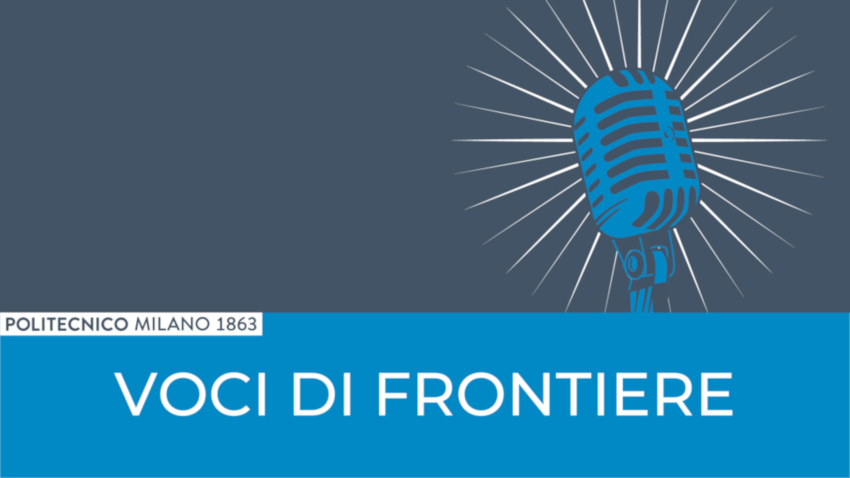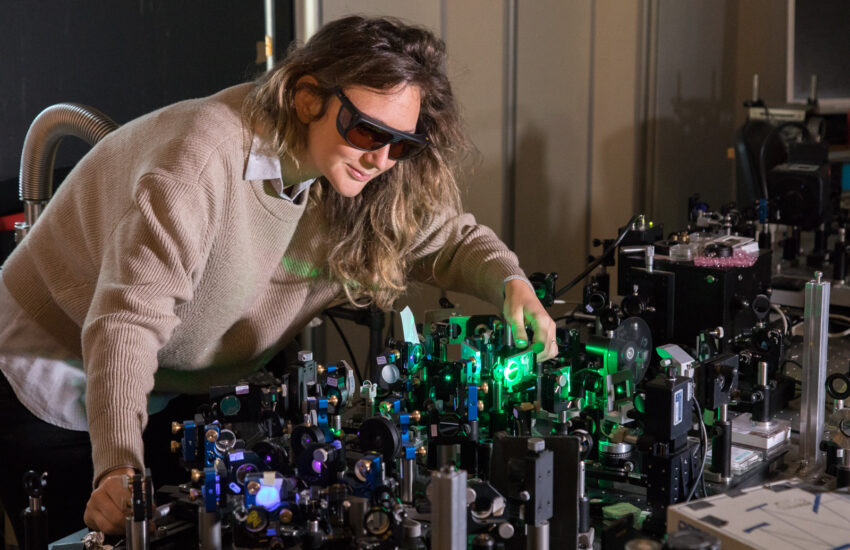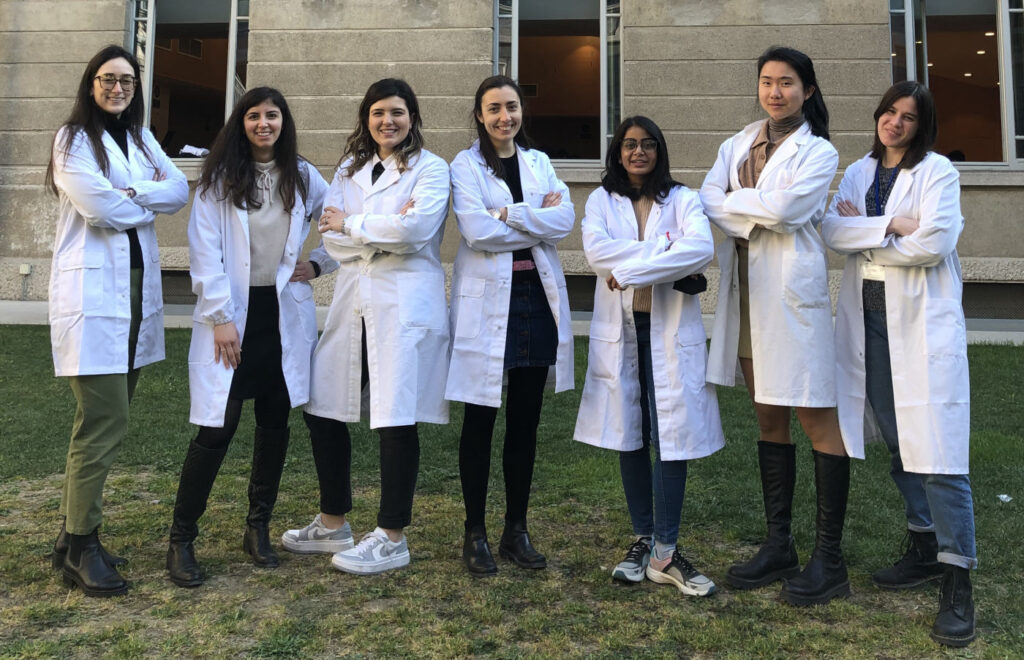March is the month of International Women’s Day and numerous initiatives have caused us to reflect again this year on just how much there is still to do to narrow the gender gap. This month’s issue does not purport to simplify such a vast topic. Instead, we want to provide you with some food for thought as we like to do it at Frontiere: by telling you stories of women researchers who have chosen the Politecnico as the place for their research.
Let’s start by going back to the past, with the architect Liliana Grassi and the story of her exceptional restoration of the Ca’ Granda in Milan. A past that today has do deal with digital: Deborah Agostino researches precisely the enhancement of cultural heritage in the age of the internet. In the present, instead, there are the great advances in photonics: Margherita Maiuri accompanies us through the ultrafast spectroscropy laboratories, where ultrashort laser pulses are used to study matter. Another two female researchers, Ferrante and Pedrocchi, introduce us to the THInkPen, a patented tool for monitoring writing to detect the onset of neurodegenerative diseases related to old age. Finally, a look to the future, with the LaBS PhD students: eight young women full of passion for research, working on technologies to serve the medicine of tomorrow, coordinated by bioengineer Maria Laura Costantino.
If all this were not enough, we recommend the playlist of the “Politecnico delle donne” (Women’s Politecnico): a gallery of video-portraits of women at the Politecnico. The story of a vibrant environment, in which the female contribution is precious and diversified, very far from the worn-out stereotype of an all-male technical university.

Voci di Frontiere: the new podcast
This month, we have some great news: a new vehicle to enhance the journey into the world of research. In addition to the newsletter and the website, there is now a new podcast by the Politecnico di Milano: Voci di Frontiere.
With interviews with professors and researchers, Voci di Frontiere discusses relevant issues and scenarios through the prism of research at the Politecnico di Milano. In the first three episodes, already available on the main platforms, we talk about 5G, Fintech and Space Economy.
Liliana Grassi and the creative restoration of Ca’ Granda
Not everyone knows that behind the current headquarters of the State University of Milan, there is a great woman from the Politecnico: the architect Liliana Grassi, a professor here for twenty-five years.
We take you on a tour of the Ca’ Granda, which until a few years earlier was still the major hospital in Milan, and which in 1943 was severely damaged by the bombings in the Second World War.
At the age of 25, Grassi collaborated on the 1948 restoration project by Annoni and Portaluppi, later taking over as project manager. Her meticulous analysis of the documentary and iconographic sources resulted in the building that we can still admire today in via Festa del Perdono: the “reinforcement of hope and memory” that unites present and future.
PHOTONEWS

In ultrafast spectroscopy laboratories, laser sources are used to generate ultrashort light pulses, to analyse the physical properties of matter. Said like this, it sounds like the mission of a superhero, and instead it is what happens every day when researcher and laboratory are combined at the Politecnico.
It is not easy to explain how the study of these light pulses can have practical repercussions on our lives. But Margherita Maiuri does so very successfully, taking us on a tour of her laboratory, explaining her research and how her passion for nanotechnologies was born.
The thinking pen
Writing analysis is important because it is one of the daily gestures that is the first to suffer from the onset of age-related neurodegenerative diseases. Monitoring a person’s writing means facilitating the early diagnosis of these pathologies.
This is the idea behind THInkPen: the first sensorized ink pen capable of evaluating handwriting alterations while still allowing the naturalness and ease of the traditional putting pen to paper.
We present this patent with our professors Simona Ferrante and Alessandra Pedrocchi.

A journey into the bioengineering laboratories with 9 Politecnico’s researchers
Entering LaBS is just the start of a fascinating journey: in the displays and on the tables of the laboratories, we can find artificial prostheses, organ models and medical devices of all kinds. When we talk about technology applied to medicine, we immediately feel we are dealing with something good, useful, universal.
There to welcome us into the laboratory, there were not just artificial hearts, but also many big real hearts too; the hearts of the female researchers who talked to us about their love of bioengineering, their careers, the research they are doing and the obstacles that still exist for women engineers. And the heart of Maria Laura Costantino, coordinator of the Artificial Organs unit, who talked to us about her life.
The new life of cultural heritage
Digital has changed many habits of our daily life, from shopping to services. But at what point is digitization in those sectors that we tend to consider more conservative, such as cultural institutions?
At the Politecnico, we have created a Observatory of Digital Innovation in Cultural Heritage and Activities, created precisely to analyse these transformations over time and support the process of adopting digital innovation in cultural institutions.
Deborah Agostino illustrates the opportunities offered by digital technology in rendering cultural heritage accessible to an ever-growing population.

